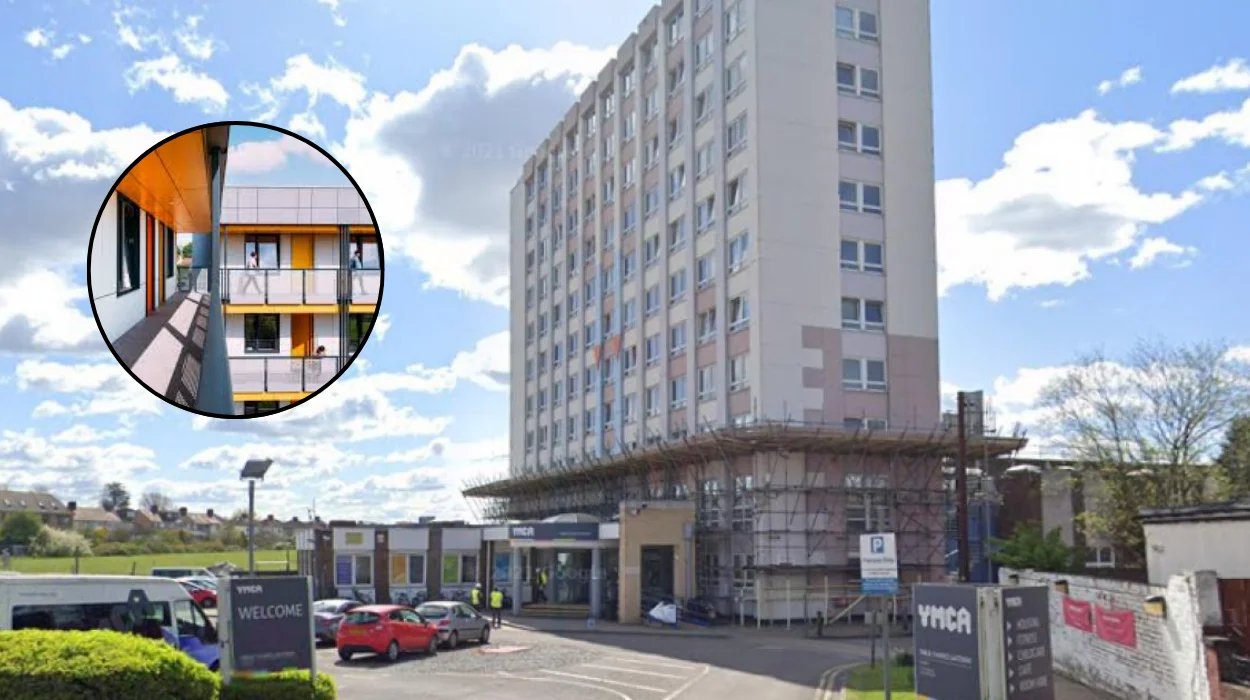Key Points
- YMCA Romford, located on Rush Green Road, has over 50 years of history since its opening in 1969.
- The site was donated by Thomas England, acknowledged as a key figure in the YMCA’s early days.
- Construction began in 1964 and completed late 1960s, costing £460,000, resulting in a 148-bed hostel.
- Originally housed young workers, including Ford Motor Company apprentices and students.
- The late Duchess of Kent, Katherine, officially opened the facility in July 1969.
- The 11-storey block is a local landmark, known for its height and colourful signage.
- The site was surrounded by industrial and commercial properties in the 1980s.
- YMCA Romford is set for comprehensive regeneration with plans for refurbishment and a new six-storey supported living block.
- Proposed new building would provide 184 supported accommodation units with shared facilities and flexible ground floor usage.
- Discussions include relocating current residents to new accommodation during renovation of the existing tower.
- Formal planning application expected in early 2026.
What is the historical significance of YMCA Romford in Rush Green?
As reported by Romford Recorder, the YMCA Romford on Rush Green Road has been part of the community since 1969, embodying over five decades of social housing and support services. The land was generously left to the charity by Thomas England, whom the YMCA recognises as a “leading player” in its formative years.
Construction started in 1964 with an investment of £460,000, resulting in a hostel featuring 148 beds. This facility was primarily intended for young people working locally, especially apprentices from Ford Motor Company, and students, reflecting the area’s industrial and educational landscape at the time.
The official opening in July 1969 was led by the late Duchess of Kent, Katherine, underscoring the significance of the site. Havering Libraries preserves the memory of the YMCA building as a dominant feature of the skyline during the 1980s, situated within an industrial area including Carries Hall, Kings Portable Buildings Ltd, Abanhams Car Welding, and Salian Building Supplies.
A notable photograph from 1984 shows the YMCA building surrounded by open green and public spaces before more extensive local development.
How is the YMCA Romford site identified visually and historically?
The YMCA Romford is instantly recognisable due to its height – an 11-storey block – and its colourful signage which has marked the skyline for decades. It stands as a landmark in the Rush Green area, reflecting its longstanding role in providing housing and community services.
As Havering Libraries notes, during the 1980s, it stood amidst various commercial and industrial properties, which have since changed dramatically, highlighting both the evolution of the local area and the continued importance of the YMCA site.
What are the plans for redevelopment and regeneration at the YMCA Romford site?
According to updates on the YMCA website and coverage by Romford Recorder, the YMCA is planning a “comprehensive regeneration” of the Rush Green branch. This ambitious project includes significant improvements to housing facilities and fitness amenities.
Central to the plan is the construction of a new six-storey block designed to offer 184 units of supported accommodation. These will feature shared living, dining, and kitchen areas aimed at fostering community among residents. Additional amenities like an on-site laundry room and flexible studio space accessible to both residents and the public are proposed to enhance usability.
Following the completion of the new building, upgrades to the existing tower will take place. During this period, current residents might be relocated to the new accommodation to facilitate refurbishment without disruption.
When is the YMCA Romford refurbishment project expected to progress formally?
The YMCA anticipates submitting a formal planning application early in 2026, as outlined on its official platform. This process will begin after ongoing pre-application consultations with the local authority and stakeholders, ensuring the community’s needs and feedback shape the final development.
What are the implications of YMCA Romford’s redevelopment for local residents and the community?
The redevelopment represents a modernisation of a historic facility that has served young workers and students for decades. It aims to increase supported accommodation capacity from 148 to 184 units, modernising living conditions while maintaining the YMCA’s foundational mission of community support.
The new amenities and flexible public spaces could strengthen community engagement and accessibility. Additionally, the refurbishment seeks to ensure that existing residents experience minimal disruption by providing temporary relocation options.
Related News:
- IOPC investigates after man, 45, dies in Romford police custody hours before court appearance
- Robert Price Dagenham fire death: Teens admit manslaughter after fatal firework attack
- Raihana Awolaja’s death contributed to by care home ‘neglect’
- Romford Collier Row Lane Dry Cleaners Redevelopment Plans
